- Canadian Housing Prices Have Increased 3X US Housing Prices Over The Decade
- Canadian Mortgages Tend To Have Adjustable Rates, Making Consumers More Vulnerable To Inflation
- The Canadian Government Tracks Housing Prices, Only New Construction Tracked In US
My mom was born in Montreal, and she immigrated to Connecticut when she was 13, so I’ve always felt an affinity towards Canada. When the kids were young, we’d often drive north across the border during school breaks to ski at places like Mont Tremblant or Mount Orford. A big part of the kid’s entertainment included seeing the “Arret” signs and PFK Restaurants.
but I digress…
More than a decade ago, a prominent Canadian bank flew me to Ottawa to speak at an event and pitch me about developing a Canadian market report. I was excited about it, but the executives who pitched the idea moved on to other things. It’s interesting to me that the Canadian housing market is tracked by the government and they do a pretty good job given the limitations of the repeat-sales-method that FHFA and Case Shiller rely on. The US government tracks new construction through Census.gov but that’s only about 10% of sales in the for sale housing market.
Teranet-National Bank House Price Index (Canada)
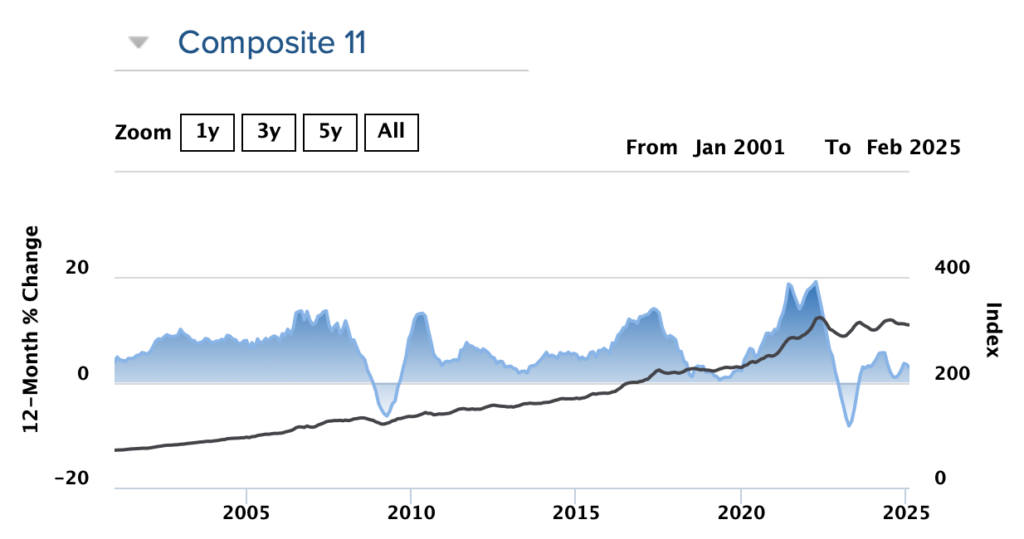
I first started thinking about about the Canadian housing market as the U.S. housing market tanked in 2008. Here’s something I wrote in 2012 (the video is broken and most of the links don’t work) at about the time the US housing market had finally bottomed. The difference for Canada is they didn’t experience the same intensity of price correction that the US experienced. The Philadelphia Fed wrote about how mortgage fraud helped create the US housing bubble – more than 7% of mortgage applicants were dishonest, driving up housing prices. Having lived through it, I contend that Wall Street, through financial engineering, such as “liar” loans created the platform for consumers, not fully understanding what they were signing, that caused much of the US mortgage fraud.
The Cleveland Fed has a good take on why Canada’s housing market didn’t get thrashed like the US Housing market did. The Canadian housing market rate of peak decline was in February 2009 at 5.9% YOY while the US National Case Shiller YOY decline was also in February 2009 but was 12.8%, or twice the rate as Canada.
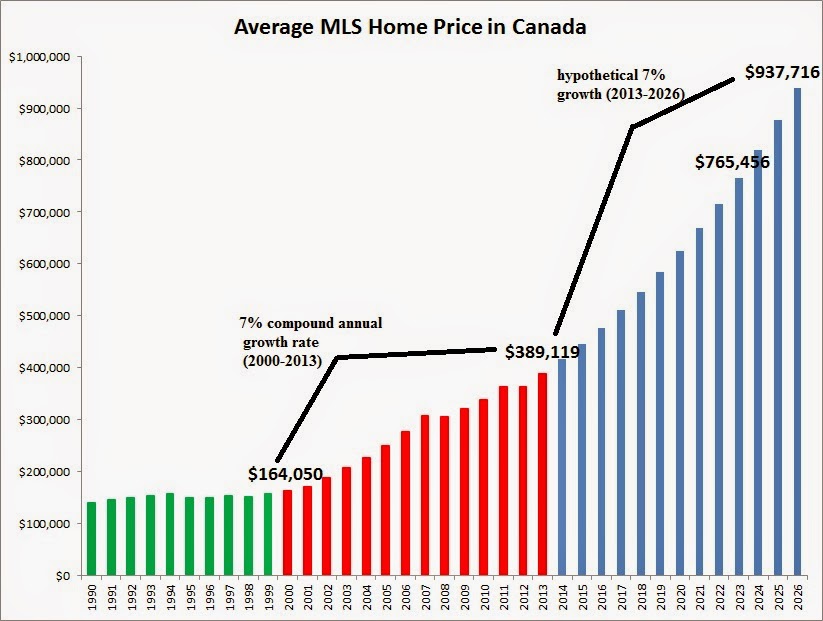
However, housing prices in Canada have increased much faster than in the US over the past decade. Average US home prices have risen 38%, while the average Canadian home price rose 140%. Throw in the fact that home mortgages in Canada tend to be adjustable-rate mortgages, like much of the world, whereas US purchase mortgages tend to be 30-year fixed rates. The Canadian consumer is much more vulnerable to the US tariff tantrums.
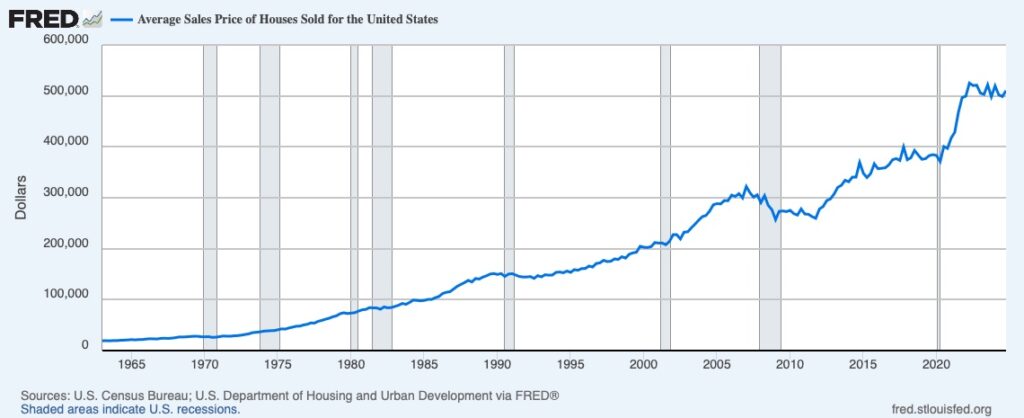
US Tariff Threats Are Slowing The Canadian Housing Market
According The Canadian Real Estate Association (CREA), the uncertainty about the US tariff threats are cooling the Canadian market:
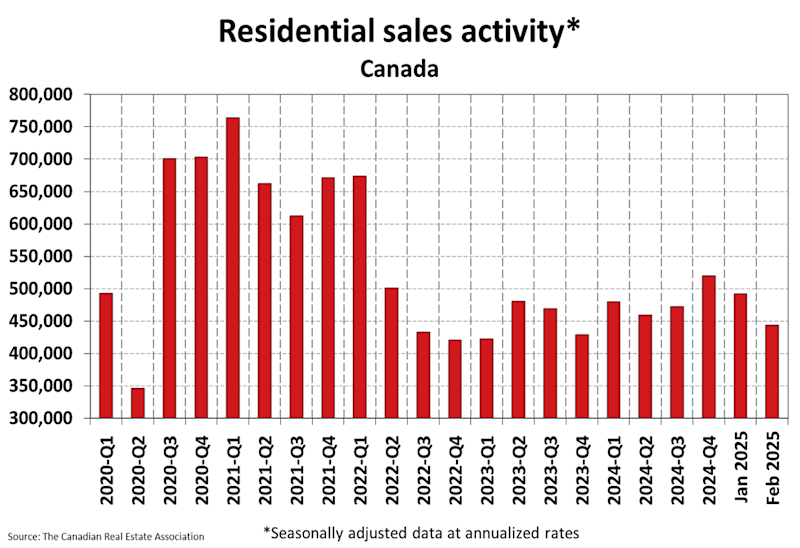
““The moment tariffs were first announced on January 20, a gap opened between home sales recorded this year and last. This trend continued to widen throughout February, leading to a significant, but hardly surprising, drop in monthly activity,” said Shaun Cathcart, CREA’s Senior Economist.”
“Declines were broad-based, with sales falling in about three-quarters of all local markets and in almost all large markets.”
The fact that sales are unexpectedly falling across a large swath of the Canadian market suggests an external event is disrupting the outlook for the Canadian housing market. It’s just a hop, skip, and jump to conclude that US tariffs are driver of current Canadian housing market uncertainty.
“Robert Hogue, assistant chief economist at RBC, likened the housing outlook to “putting a price on a home before an earthquake—it’s hard to know what shape the structure will be in at the end of the day.”
More Rate Cuts Expected For Canadian Housing
While rate cuts by the US Fed are not expected anytime soon, Canada just cut them and has been cutting them throughout 2024. In fact, a few more cuts are anticipated. This may improve sales a little, but the problem with rate cuts like this is they tend to push prices higher these days.
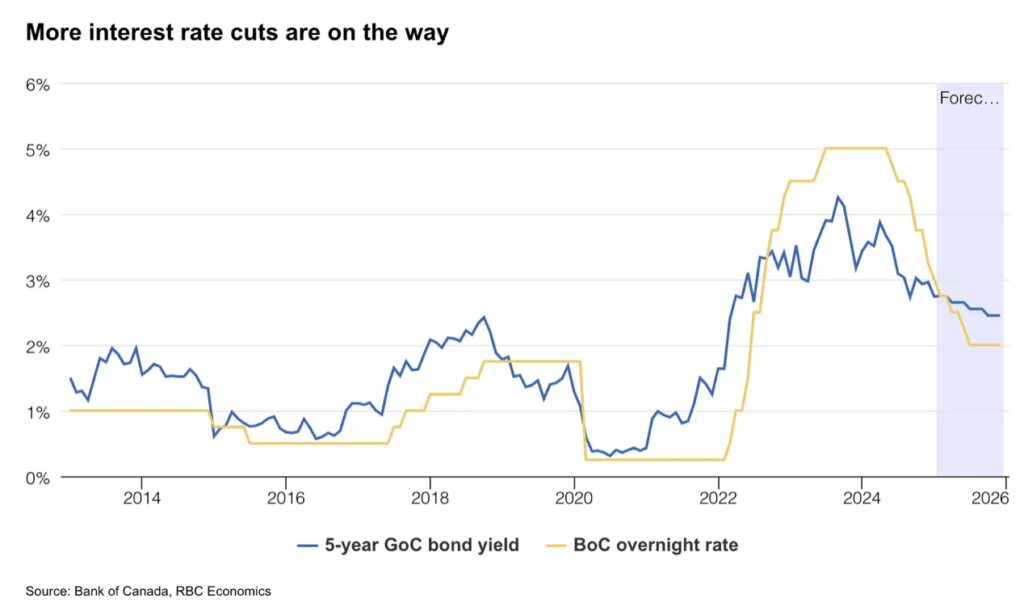
Final Thoughts
Canadian homebuyers are currently trapped between a rock and a hard place. It’s southern neighbor has become its antagonist saber-rattling 25% tariffs for no sane reason, not understanding who actually pays the tariff. Home prices have risen more than 3x faster in Canada than in the US over the past decade, and homebuyer reliance on adjustable-rate mortgages has made Canadians more vulnerable to higher mortgage rates. As our largest trading partner by far, I worry that the US relationship with Canada will be damaged beyond repair as they look for new trading partners after this bizarre theatre comes to an end.
The Actual Final Thought – In addition to the current economic chaos we are experiencing, I’ve often had this song stuck in my head (wait for it).
Did you miss the previous Housing Notes?

Housing Notes Reads
- GSE Reform Resurfaces: Challenges and Implications [JPMorgan]
- What happens to mortgage rates if conservatorship ends for Freddie Mac and Fannie Mae? [Fast Company]
- Fannie Mae and Freddie Mac Are Shaken Up by Their Regulator [NY Times]
- Fannie Mae Admits Financial Losses Amid Ongoing Mortgage Fraud Investigation [Bisnow]
Market Reports
- Elliman Report: Manhattan, Brooklyn & Queens Rentals 2-2025 [Miller Samuel]
- Elliman Report: Florida New Signed Contracts 2-2025 [Miller Samuel]
- Elliman Report: New York New Signed Contracts 2-2025 [Miller Samuel]


